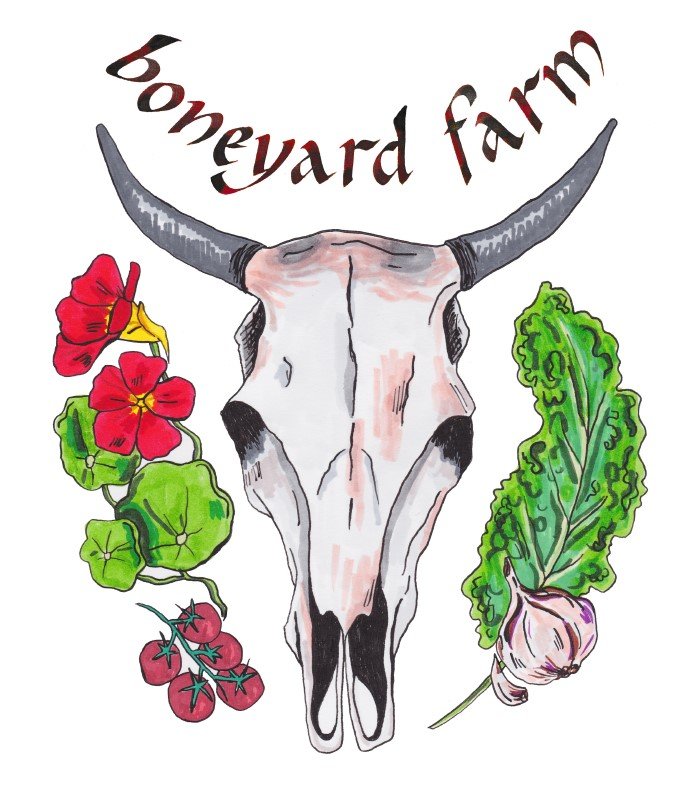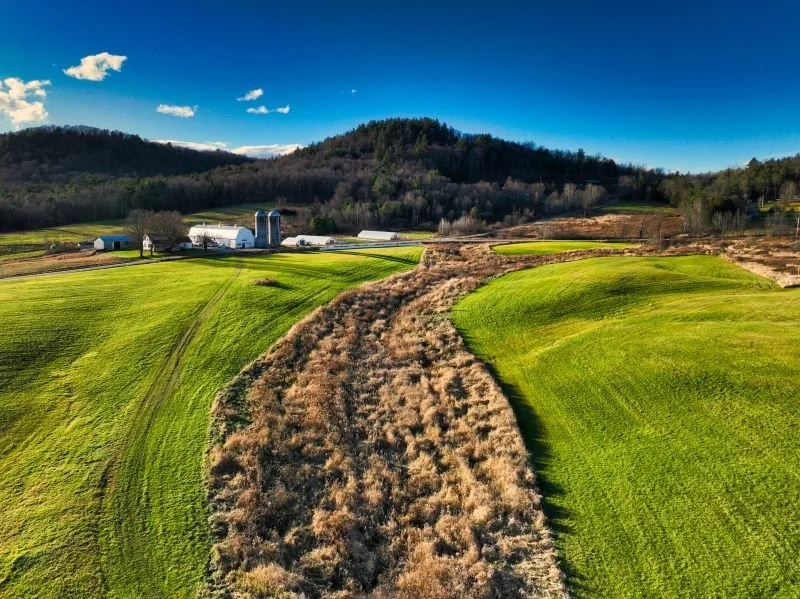
Take good care.
The health and wellbeing of the land is as important as the viability of our farm business and the health of our family. We are honored to be the caretakers of this 180-acre property, which includes approximately 80 open acres and 100 acres of mixed forest.
We love this land. We love this part of Vermont. Every day, from our farm, we can look up at Mount Mansfield and see the spot where we first met, hiking along the Long Trail. Hannah grew up in Vermont, with homesteading parents and a consulting forester for a father. John and Hannah both studied environmental science and policy, and knew they wanted to make a difference and be good land stewards.
This farm, which was once a conventional dairy, is now conserved forever. We have deep gratitude for the Vermont Land Trust for making this happen. We are actively working to manage the natural resources of the farm for wildlife habitat, biodiversity, soil and water health, climate change resilience, and agricultural production.
“We abuse land because we regard it as a commodity belonging to us. When we see land as a community to which we belong, we may begin to use it with love and respect.”
As we establish our farm business, it has consistently been a mission of ours to prioritize the health of our land and its natural ecosystem. We have established riparian buffers, planted thousands of native tree species to restore stream habitat, built livestock exclusion fencing, and worked with an ecologist from Vermont Land Trust to install instream wood additions along a major stream.
In August of 2023, we hosted a NOFA-VT workshop, open to the public. We focused on stream restoration and water quality practices, and stood alongside service providers from VLT and the Franklin County Natural Resource District to share our thoughts on why land stewardship and conservation are important to us. We hope to host more on-farm educational workshops and events in the future. Another riparian buffer was established in 2024, and we planted shrub willow, speckled alder, tamarack, and nannyberry trees along the stream corridor and installed a permanent stream crossing and exclusion fencing for our livestock. Hannah and VLT ecologist Allaire Diamond presented a workshop at the 2025 NOFA-VT Winter Conference on “Riparian Buffers, Livestock Exclusion, and On-Farm Water Management.”
When we first purchased the farm, we hired a consulting forester and enrolled the land in the Current Use program, drafting a forest management plan to improve the forest and wildlife habitat. We logged in the winter of 2024, and we worked with our forester to ensure timber stand improvements, along with improved wildlife habitat and access. We are enrolled in the NRCS Conservation Stewardship Program and have installed nesting bird houses, released mast trees for wildlife, and are working to establish a native meadow for pollinators and beneficial insects.
Enrollment in federal conservation programs, as well as our organic certification process, holds us accountable to measurable outcomes. However, we assess our progress also by knowing and monitoring our land as well as we can. We walk through fields and notice what species of grass and forbs we have, we hear songbirds and wildlife and watch the native populations of deer and bobolink. We show our kids how to track mammals in the winter and catch frogs from the stream in summer. The way that we care for this land and for our community is our most important work, and our legacy.
LEARN MORE! Boneyard in the news…
Thousands of Trees Planted at Boneyard Farm for Water Quality and Diversity (Franklin Country NRCD)
Over 5,000 Trees Planted to Protect Against Flooding and Boost Clean Water in Lake Champlain (Vermont Land Trust)
Climate Change is Causing Vermont Farmers to Adapt (Seven Days)
VAWQP Programs Support Resilient Landscapes Through Collaboration (Vermont Agricultural Water Quality Partnership)








